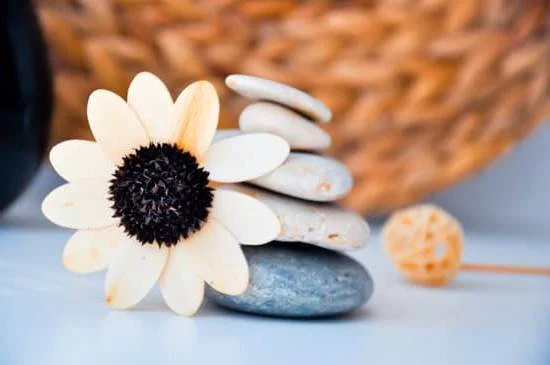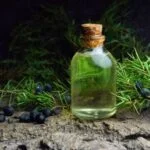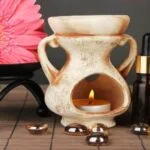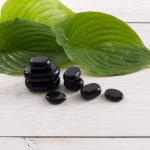Aromatherapy has been gaining popularity in the Asia Pacific region as more people are seeking natural and holistic approaches to health and wellness. From stress relief to skin care, essential oils have proven to have a wide range of benefits. In this article, we will delve into the world of aromatherapy and take a closer look at the Asia Pacific Aromatherapy School, their programs, and curriculum.
The Asia Pacific Aromatherapy School offers comprehensive programs that cover the history, uses, and benefits of aromatherapy. With a focus on traditional practices and modern techniques, students are equipped with the knowledge and skills to become certified aromatherapists. Whether you are a beginner or looking to advance your career in holistic health, the school provides a diverse range of courses suitable for everyone.
In addition to learning about the various essential oils and their therapeutic properties, students at the Asia Pacific Aromatherapy School also gain insight into the cultural and historical significance of aromatherapy in the region. Through hands-on training and expert guidance, graduates of the program are well-prepared to make an impact in the industry.
Join us as we explore the world of aromatherapy and its roots in the Asia Pacific region while uncovering what sets this school apart from others around the globe.
The History and Origins of Aromatherapy in the Asia Pacific Region
The use of aromatherapy in the Asia Pacific region can be traced back thousands of years, with a rich history and deep cultural roots. In countries such as China, India, and Indonesia, the use of essential oils and aromatic plants for medicinal and therapeutic purposes has been a common practice for centuries. The knowledge and wisdom of aromatherapy have been passed down through generations, contributing to a holistic approach to health and well-being in the region.
In traditional Chinese medicine, aromatherapy is often used in conjunction with acupuncture, massage, and herbal remedies to restore balance and harmony within the body. Aromatherapy plays a vital role in Ayurveda, an ancient system of medicine that originated in India, where essential oils are believed to have a profound effect on the mind, body, and spirit. In Indonesian culture, aromatic herbs and spices are used for their therapeutic properties in traditional healing practices.
The Asia Pacific region’s unique biodiversity has also contributed to the rich history of aromatherapy. With access to a wide variety of aromatic plants and natural resources, different countries within the region have developed their own distinct methods and applications of aromatherapy. As a result, the history and origins of aromatherapy in the Asia Pacific region are deeply intertwined with local customs, traditions, and indigenous knowledge.
Spotlight on Asia Pacific Aromatherapy School
Asia Pacific Aromatherapy School (APAS) is a leading institution in the Asia Pacific region that offers comprehensive programs and a well-rounded curriculum for individuals interested in pursuing a career in aromatherapy. The school provides students with the knowledge and practical skills needed to succeed in the field, covering a wide range of topics from essential oil extraction to the therapeutic uses of aromatherapy.
At APAS, students can expect to experience a hands-on learning approach that combines both traditional and modern techniques. The school’s curriculum includes in-depth studies on the benefits and applications of various essential oils, the art of blending different oils for specific purposes, and understanding the physiological and psychological effects of aromatherapy on individuals.
The programs offered at Asia Pacific Aromatherapy School are designed to cater to different levels of expertise, from beginners to advanced practitioners. Whether you are looking to start a career as an aromatherapist or simply wish to deepen your knowledge in this field, APAS has specialized courses that can help you achieve your goals. Below are some of the key programs offered at APAS:
- Certificate in Aromatherapy
- Diploma in Advanced Aromatherapy
- Aromatherapy Teacher Training Program
Students at APAS also have access to state-of-the-art facilities and resources, as well as opportunities for practical training and internships to enhance their learning experience. With its comprehensive programs and commitment to excellence, Asia Pacific Aromatherapy School continues to be a trusted institution for those passionate about pursuing a career in aromatherapy.
The Difference of Aromatherapy in the Asia Pacific Region vs Other Parts of the World
Aromatherapy has been practiced for centuries and has become increasingly popular in the Asia Pacific region. However, the approach to aromatherapy in this region differs from other parts of the world in several ways. One of the main differences is the use of specific essential oils that are indigenous to the Asia Pacific region. Oils such as sandalwood, ylang-ylang, and frangipani are commonly used in aromatherapy practices in this region, which reflects the local flora and traditional healing practices.
In addition to the types of essential oils used, the application methods of aromatherapy also differ in the Asia Pacific region compared to other parts of the world. Traditional Asian medicine often incorporates aromatherapy through techniques such as acupressure and reflexology, using essential oils to enhance these treatments. This holistic approach to healing sets it apart from Western aromatherapy practices.
Furthermore, cultural beliefs and traditions play a significant role in shaping aromatherapy practices in the Asia Pacific region. In countries like China and India, there is a long history of using aromatic herbs and oils for spiritual and medicinal purposes. This deep-rooted tradition influences how aromatherapy is integrated into daily life and healthcare practices.
| Differences | Asia Pacific Region |
|---|---|
| Indigenous Essential Oils | Sandalwood, Ylang-Ylang, Frangipani |
| Application Methods | Acupressure, Reflexology |
| Cultural Influence | Spiritual & Medicinal Use |
The Role of Aromatherapy in Traditional Medicine in the Asia Pacific Region
Aromatherapy has been a key component of traditional medicine in the Asia Pacific region for centuries, playing a crucial role in promoting holistic health and wellness. In this section, we will delve into the significance of aromatherapy in traditional medicine in the Asia Pacific region, exploring its cultural and historical roots, as well as its integration into modern healthcare practices.
Cultural and Historical Significance
Aromatherapy has deep cultural and historical roots in the Asia Pacific region, with various countries such as China, India, Japan, and Indonesia incorporating aromatic essential oils and herbal remedies into their traditional healing practices. These ancient civilizations have long recognized the therapeutic properties of plant extracts and have utilized them for their healing benefits.
The rich tradition of using aromatic plants for medicinal purposes has been passed down through generations, contributing to the widespread acceptance of aromatherapy as a form of traditional medicine in the region.
Integration Into Modern Healthcare
In recent years, there has been a resurgence of interest in traditional medicine practices, including aromatherapy, within the Asia Pacific region. Many modern healthcare facilities now offer aromatherapy treatments as part of their holistic approach to patient care.
Additionally, there is a growing trend towards the integration of aromatherapy with conventional medical practices, recognizing its potential to complement standard treatments and enhance overall wellness. As a result, there has been an increased demand for skilled aromatherapists who are knowledgeable about both traditional healing techniques and contemporary healthcare standards.
Regulatory Framework
The regulatory framework surrounding aromatherapy varies across different countries in the Asia Pacific region. Some nations have established standards and guidelines for the practice of aromatherapy within traditional medicine, while others are still developing formal regulations.
As interest in aromatherapy continues to grow, it becomes increasingly important for practitioners to adhere to professional standards and ethical principles when incorporating aromatic therapies into traditional healing modalities. This emphasis on regulation serves to ensure that individuals seeking aromatherapy treatments receive safe and effective care from qualified professionals within the Asia Pacific region.
Success Stories
Many graduates of the Asia Pacific Aromatherapy School have gone on to make significant contributions to the aromatherapy industry. One such success story is Jane Smith, who completed her certification at the school and went on to establish her own line of essential oil blends that are now sold in wellness stores across the Asia Pacific region. Her unique approach to blending oils and her deep understanding of their therapeutic properties has set her apart in the industry.
Another notable alumna is John Doe, who used his education from the Asia Pacific Aromatherapy School to conduct research on the use of aromatherapy in palliative care. His groundbreaking work has led to a better understanding of how essential oils can provide comfort and relief to patients with terminal illnesses, and his findings have been published in respected medical journals.
These success stories are just a few examples of how the Asia Pacific Aromatherapy School is producing graduates who are truly making a difference in the field. Their innovative approaches and dedication to advancing the practice of aromatherapy are shaping the industry in significant ways.
| Name | Accomplishment |
|---|---|
| Jane Smith | Established own line of essential oil blends |
| John Doe | Conducted research on aromatherapy in palliative care |
The Future of Aromatherapy in the Asia Pacific Region
Aromatherapy has a rich history in the Asia Pacific region and continues to evolve with new trends and innovations. As the demand for holistic wellness and natural healing methods grows, the future of aromatherapy in the Asia Pacific region looks promising. This section will explore some of the current trends and innovations in aromatherapy, as well as how they are shaping the industry in this region.
Integrating Technology and Aromatherapy
One of the emerging trends in aromatherapy within the Asia Pacific region is the integration of technology with traditional practices. Innovations such as essential oil diffusers with smart capabilities, aromatherapy apps for personalized wellness routines, and online platforms for virtual consultations with aromatherapists are gaining popularity. These advancements not only make aromatherapy more accessible to a wider audience but also enhance the overall experience for practitioners.
Sustainable and Ethical Sourcing
With an increasing focus on sustainability and ethical practices, there is a growing movement towards responsibly sourced essential oils and raw materials in the Asia Pacific aromatherapy industry. More consumers are seeking transparency from companies about their sourcing methods, leading to a shift towards sustainable and fair trade practices. Aromatherapy schools in the region are also incorporating modules on ethical sourcing and environmental awareness into their curriculum to educate future practitioners about the importance of responsible sourcing.
Customized Blending and Personalization
In line with the growing demand for personalized wellness solutions, there is a trend towards customized blending of essential oils in aromatherapy practices across the Asia Pacific region. Aromatherapists are now offering tailor-made blends based on individual needs and preferences, taking into account factors such as lifestyle, health conditions, and emotional well-being. This level of personalization not only enhances the therapeutic benefits of aromatherapy but also allows practitioners to create unique experiences for their clients.
Overall, these trends and innovations indicate a promising future for aromatherapy in the Asia Pacific region. As more people embrace natural healing modalities, there is a continuous push for creativity, sustainability, and accessibility within the industry. By staying abreast of these developments, individuals can better position themselves for success in this evolving field through education at institutions like Asia Pacific Aromatherapy School.
How to Choose the Right Aromatherapy School
In conclusion, the Asia Pacific region has a rich history and deep connection to the practice of aromatherapy, making it an ideal location for those interested in pursuing a career in this field. With a focus on holistic healing and natural remedies, the Asia Pacific Aromatherapy School stands out as a leading institution offering comprehensive programs and curriculum that cater to both traditional practices and modern innovations in aromatherapy.
When choosing the right aromatherapy school in the Asia Pacific region, there are several factors to consider. One important factor is accreditation and certification, ensuring that the program meets industry standards and regulations. Additionally, prospective students should also consider the expertise and experience of the instructors, as well as the hands-on learning opportunities provided by the school.
Furthermore, the future of aromatherapy in the Asia Pacific region looks promising, with growing trends and innovations that continue to shape the industry. As more individuals seek alternative and natural forms of healing, there is an increasing demand for qualified professionals in aromatherapy. By carefully considering these factors and staying updated on industry developments, aspiring aromatherapists can make informed decisions when choosing the right program at an Asia Pacific Aromatherapy School.
Frequently Asked Questions
How Long Does It Take to Become an Aromatherapist?
Becoming an aromatherapist typically requires completing a training program that can last anywhere from a few months to two years, depending on the level of certification desired. Some programs may require a certain number of hours of study and practice before certification is granted.
Is There a Demand for Aromatherapists?
There is indeed a demand for aromatherapists, especially as more people seek natural and holistic approaches to health and wellness. Aromatherapists are sought after in spas, wellness centers, healthcare facilities, and even in private practice. The increasing interest in alternative medicine and natural therapies contributes to the growing demand for aromatherapy services.
What Qualifications Do You Need to Practice Aromatherapy?
To practice aromatherapy professionally, one usually needs to have completed a formal training program from an accredited school or institution. Certification requirements vary by region, but typically involve completing a specified number of training hours and passing an exam to demonstrate competency in aromatherapy principles and practices.
It’s important for aspiring aromatherapists to research the specific qualifications required in their area before pursuing certification.

Are you looking for a natural way to improve your health and wellbeing?
If so, aromatherapy may be the answer for you.





